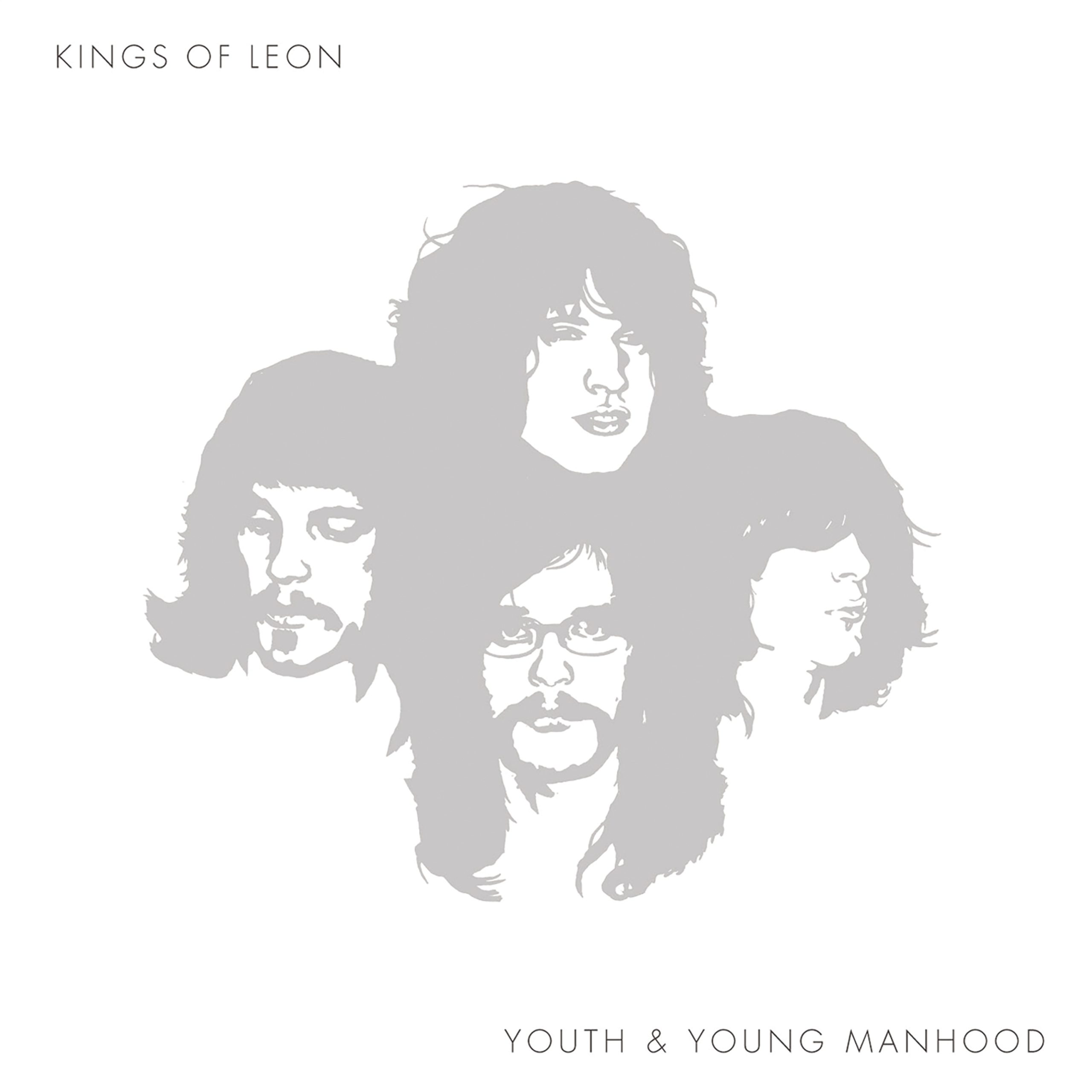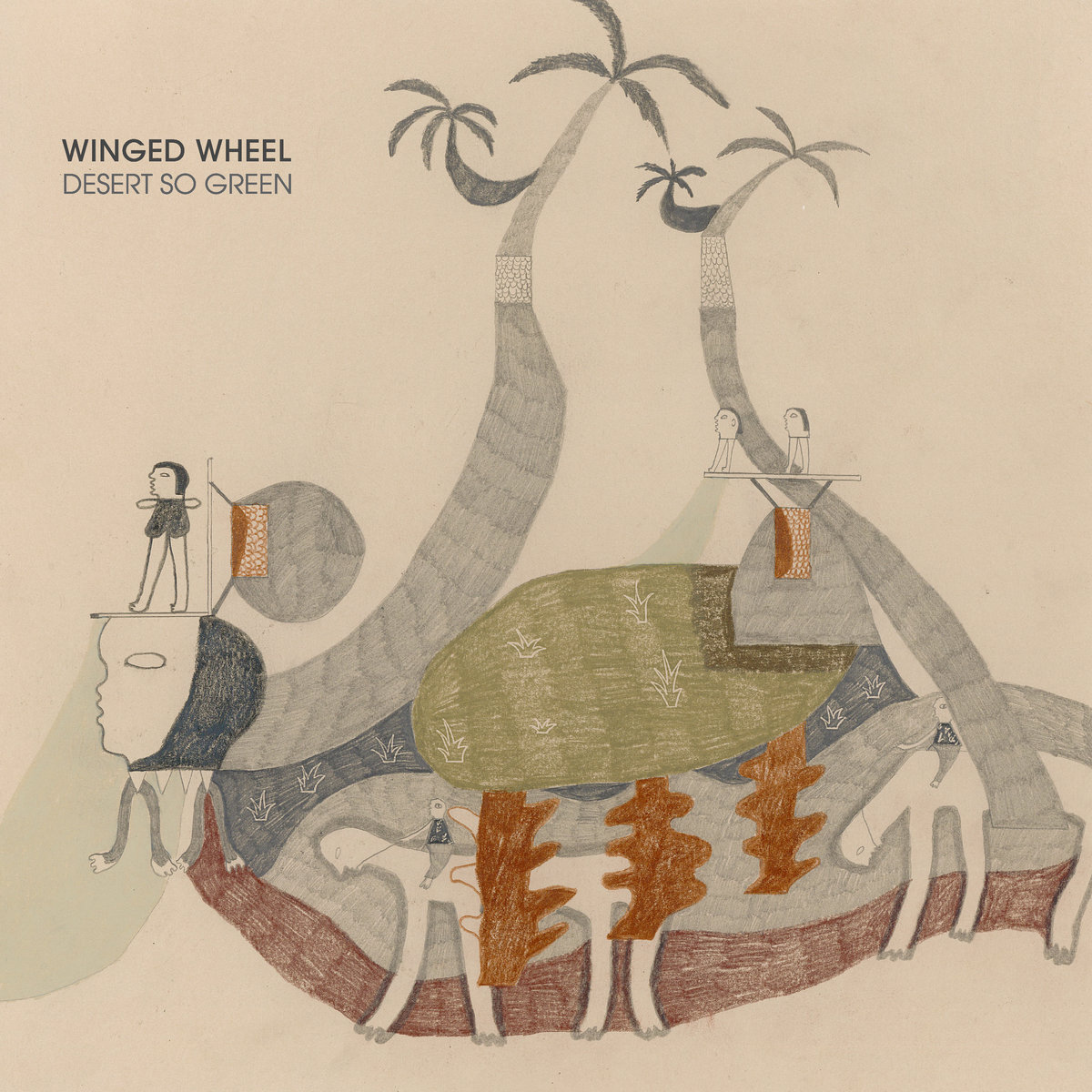- RCA
- 2003
Everyone always knew Kings Of Leon had a great story. The band was a family affair, made up of brothers Caleb, Nathan, and Jared Followill, and their cousin Matthew; all were young and scruffy but also good-looking in the dirty retro way of the early '00s garage rock boom. More importantly, the Followill brothers had come from a strange yet deeply American background, in which they'd spent large portions of their youth traveling around the South with their father, a pentecostal preacher hitting up tent revivals. By the late '90s, their father had quit the calling and their parents had split, leading to Caleb and Nathan settling near Nashville and shopping demos around. The whole thing was steeped in rock 'n' roll myth-making from the start, and soon the band would live it out for real.
You know this story. Because people knew it was a great story, it was beaten to death upon Kings Of Leon's arrival in the initial years of this century. By the time they were releasing their second album, they were already moodily rebutting people's ideas about them. In certain American hipster circles, they were immediately greeted with side eyes; Pitchfork, then the front guard of indie cred, was perennially skeptical of the band's whole "schtick." But whatever coolness politics surrounded (or mired) Kings Of Leon back then would cease to matter. When their full-length debut Youth & Young Manhood hit UK shelves 20 years ago today, it was the start of one of the last big rock ascensions of the 21st century.
Growing up, the Followills had limited exposure to secular pop music. They found things when they could, but they got their rock education later, not too long before the band kicked off. In the early '00s, Caleb and Nathan had attracted label interest. After they signed to RCA, the powers that be wanted to put a band together for them, but they said they'd hire their teenaged cousin and younger brother. When the band got together, they happened to make a scuzzy garage rock that seamlessly fit in with the early '00s retro rock trends, but with a twist. These guys were raw, rangy. Soon, the shorthand descriptor for Kings Of Leon was the "Southern Strokes." (They also happened to be signed by the same A&R, and they opened for the Strokes after Youth & Young Manhood came out.)
By way of proof to RCA, the elder Followills gathered Jared and Matthew, and they stayed in their basement smoking weed and writing songs for a month. They emerged with "Molly's Chambers," "California Waiting," "Wicker Chair," and "Holy Roller Novocaine," the latter of which would serve as the title track for an EP that gathered those four songs alongside "Wasted Time." It laid the groundwork for Youth & Young Manhood, where several of these songs would remain key installments.
Despite all the reasons to be skeptical of Kings Of Leon — the too-perfect origin story, the major label mechanism whirring around them — Youth & Young Manhood wasn't a runaway hit in America. It garnered some positive reviews and some immediate dismissals Stateside; meanwhile they were anointed rock saviors overseas by the ever-hyperbolic British press. Kings Of Leon became superstars in Europe, but it would take several more albums for their true commercial breakthrough at home. Still, in the wake of hallowed acts of the time like the White Stripes, KOL seemed to be part of the wave. It might not have always been laudatory, but buzz lingered around the young quartet.
At the time, there was certainly something novel about Youth & Young Manhood: For all the snide criticisms you could level at KOL over the ensuing two decades, their debut effectively recontextualized what was an inherently urbane micro-era in rock music. Their songs drew from their experiences growing up on the road in the South; they take place not in too-cool-for-school Lower East Side bars but alongside the local drunks in Tennessee dives. The whole thing was grimy and squawky, but the band proved they also had hooks. If this music ever worked on you, it's those songs — "California Waiting" and "Molly's Chambers" and "Red Morning Light" — that hold up today.
The thing is, if you weren't already in New York rubbing shoulders with Interpol in 2003, Kings Of Leon were an exhilarating gateway-drug band. Maybe they were divisive in the press from the very start, but it took a little while for their image to become so solidly doofy. Quickly, in the era spanning their first few albums, they established their reputation as young, wild rockstars. The myth continued to play out according to its pre-established rhythms, and a profile never went by without mentioning the band's hard-partying ways or the fact they were always surrounded by women. The songs were catchy; it felt like they were overflowing with ideas on their first coupe albums. If you were a kid just finding your way, it might've been easy to stumble onto KOL, fall for the old-school rockstar iconography, and in turn be led towards other bands of the era.
They were taken seriously by peers and forebears, too. After that tour with the Strokes, Kings Of Leon would return with their sophomore album Aha Shake Heartbreak, which got them slots opening for U2 (still high on their All That You Can't Leave Behind/How To Dismantle An Atomic Bomb comeback) and Pearl Jam (newly high on their self-titled comeback). They toured with Bob Dylan and were not shy about relaying the story in which Dylan heard them play "Trani" and called it a "hell of a song."
All of which is to say: Maybe there was another way Kings Of Leon's story could've gone. On those first two albums, the band had a fun, free-wheeling sound. If their worldviews and themes were slightly adolescent, well, some of them still were teens, and they warned you right in the title Youth & Young Manhood. When the band began to experiment, it was exciting at first, but that sonic tinkering quickly pivoted into a slick, more generically anthemic alt-rock. They stormed prolifically through the '00s, so that by the time they had their major hits with "Use Somebody" and "Sex On Fire" in 2008, the Kings Of Leon from 2003 seemed like a very distant memory. When the band resurfaces now, they still get the obligatory coverage. It has long since been the case that Kings Of Leon are quite a bit bigger than whatever beloved indie bands are out there, yet they seem to mean nothing to the narrative of the music landscape as critics define it.
Youth & Young Manhood doesn’t exactly hold up as a masterpiece, or even a strong album. But it does feel like a hint of somewhere else Kings Of Leon could've gone — if they, like so many of their contemporaries, hadn't survived the major label system and had to slug it out as an indie band. If, instead of becoming a band that toured Europe on a private jet while staying at their temporary compound in Spain, they had become a roughhewn rock band truer to their original ethos. That’s not what happened. Two decades of Kings Of Leon doesn't feel exciting the way it did at the time, when this band could actually ignite an argument, even if it was a dumb one about authenticity. Now, even if you have any sort of your own youthful attachment to Youth & Young Manhood, it's hard to think of KOL as anything but a little bit lame, as the band whose anodyne new music comes with NFT space launches. Each album sleep-walks them through a comfortable, untouchable brand of success, with hints of artistic curiosity barely remaining as embers. What began as a great story eventually ran aground, becoming merely a boring and predictable one.
We rely on reader subscriptions to deliver articles like the one you're reading. Become a member and help support independent media!






